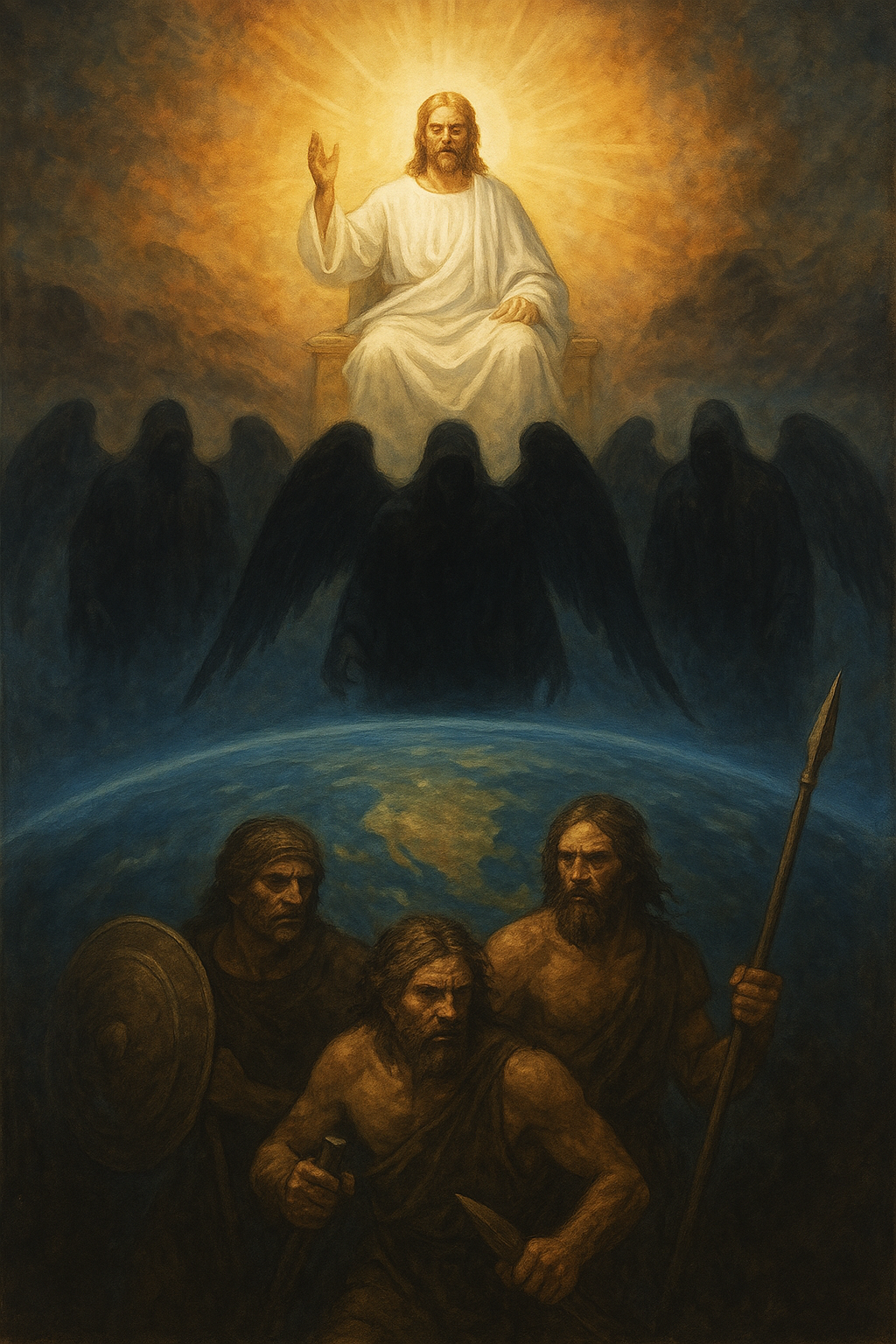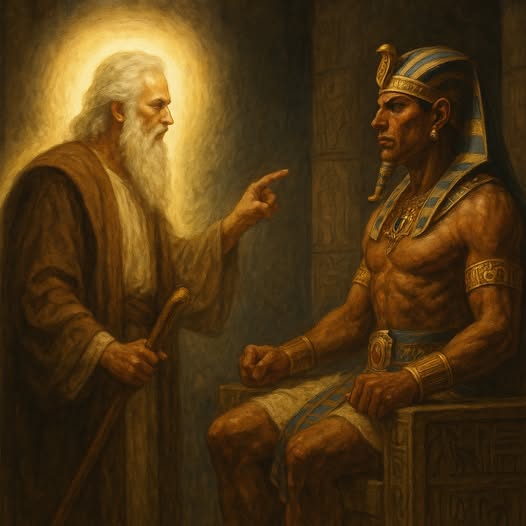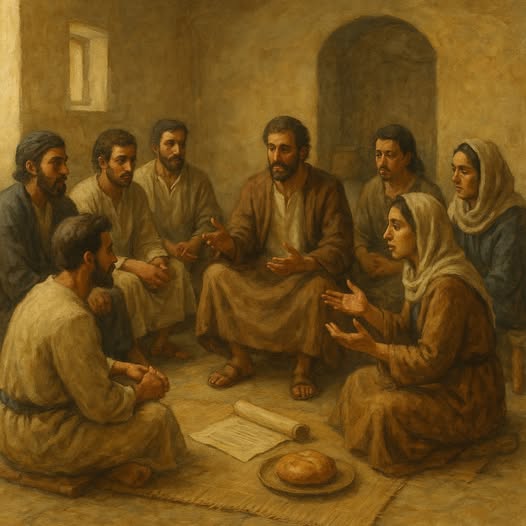
Genesis 6:1–4 raises one of the most contested questions in biblical interpretation: who are the bene elohim, the “sons of God”? Some later traditions explained them as the descendants of Seth intermarrying with the daughters of Cain, but the Hebrew text and its biblical and cultural context make such an interpretation implausible. The phrase does not point to human genealogy but to members of Yahweh’s heavenly council who crossed their God-given boundaries. This sets the stage for a contrast with Christ in the New Testament, who is the unique Son of God in a way no other being could be.
The Problem with the Sethite View
While the “Sons of Seth” interpretation has become common in some church traditions, it did not arise from the Hebrew text itself. Instead, it was developed much later, especially after Augustine’s influence in the early Church. Seeking to avoid what they saw as mythological overtones, some interpreters reframed Genesis 6 as a story about human genealogy rather than cosmic rebellion.
But this approach collapses under scrutiny. Nowhere else in the Hebrew Bible does the term bene elohim refer to human lineages. If the author of Genesis had meant to describe intermarriage between the lines of Seth and Cain, simpler and clearer phrases were available: bene Shet (“sons of Seth”) or bene Adam (“sons of man”). The use of bene elohim is deliberate and consistently refers to heavenly beings.
The Sethite view also fails to explain the presence of the Nephilim. These are not merely products of a human union. They are mighty figures, giants, whose origin is tied directly to the unnatural union between heaven and earth. The text does not describe normal humanity gone astray, but a violation of creation order involving divine beings.
The Hebrew Expression Bene Elohim
In the Hebrew Bible, bene elohim consistently refers to divine beings, not humans. Job 1, 2, and 38 depict them standing before Yahweh in His court. Psalms 29 and 89 speak of the sons of God in the heavenly assembly. If the writer of Genesis 6 had intended Seth’s descendants, Hebrew had simple ways to say so: bene Shet or bene Adam. Instead, the text uses a phrase that always points to members of the divine realm.
This fits Hebrew idiomatic usage. To be a “son of” something often meant belonging to that group. The “sons of the prophets” in 2 Kings 2:3, 5, and 7 were members of a prophetic guild, not literal children of prophets. So too, the “sons of God” are members of the heavenly host, not a human family line.
Second Temple Context and the Book of Enoch
The interpretation of Genesis 6 as a supernatural rebellion was not invented by modern readers. It was the standard understanding during the Second Temple period and into the early Church. Writings such as 1 Enoch, Jubilees, and the Book of Giants (preserved among the Dead Sea Scrolls) all portray the bene elohim as rebellious divine beings who descended, took human wives, and brought corruption through forbidden knowledge and hybrid offspring.
1 Enoch expands the Genesis narrative, naming the offenders (the Watchers), describing their transgressions, and explaining their eventual punishment. Though 1 Enoch is not part of the Hebrew canon, it reflects the worldview of many ancient Jews and early Christians. The epistles of Jude and 2 Peter directly allude to this tradition. Jude 6, for example, speaks of angels who “did not stay within their own domain.”
This shared worldview among biblical writers and their audiences confirms that bene elohim were not seen as ordinary men. The Sethite view is a theological reaction that emerged centuries later, not the original reading.
Who Are the Nephilim?
The Nephilim are only mentioned in two places in the Old Testament, Genesis 6 and Numbers 13:33, but their role is significant. The name nephilim likely derives from the Hebrew root npl (“to fall”), suggesting either “fallen ones” or those who cause others to fall. Ancient translators such as those behind the Septuagint rendered the term as gigantes, giants.
In Genesis 6, they are described as the offspring of the union between the bene elohim and human women. They are “mighty men of old, men of renown,” implying both physical strength and widespread reputation. They are not portrayed positively but as part of the corruption that provoked God to bring the flood.
In Numbers 13:33, the Israelite spies report seeing descendants of the Nephilim in Canaan. They describe themselves as grasshoppers by comparison. While the statement may reflect exaggeration due to fear, it reinforces the notion that the Nephilim were understood as large, dangerous, and terrifying. Their origin and legacy are rooted in rebellion and ruin.
The Divine Council Pattern
Genesis 6 links with the broader biblical vision of the divine council. Deuteronomy 32:8–9 describes Yahweh allotting the nations to the sons of God. Psalm 82 portrays them as corrupt rulers under judgment. Daniel 10 reveals angelic princes opposing Yahweh’s purposes. Paul echoes this in Ephesians 6:12, describing spiritual powers in heavenly places. Genesis 6 is an early instance of divine beings rebelling against Yahweh and corrupting creation, provoking the flood.
Ancient Near Eastern Parallels
In the Ancient Near East, this concept was not foreign. Ugaritic texts speak of the bn ilm (“sons of El”), a divine assembly parallel to the Hebrew bene elohim. Mesopotamian stories tell of the apkallu, semi-divine figures who brought forbidden knowledge and corruption before the flood. Genesis 6 addresses the same kind of traditions but reframes them. It is Yahweh’s council members who transgressed, and it is Yahweh who judges.
Christ as the Unique Son of God
This background explains why the New Testament’s description of Jesus is so striking. Scripture acknowledges many “sons of God,” whether heavenly beings by creation or believers by adoption. But Jesus is called monogenēs huios tou theou, the unique Son of God.
The word monogenēs does not simply mean “only begotten,” but “one of a kind.” Hebrews 11:17 uses it of Isaac, calling him Abraham’s monogenēs son even though Abraham had Ishmael and others. Isaac was unique because he was the child of promise. Likewise, Jesus is the unique Son of God, not because He is the only one ever called “son,” but because His sonship is categorically different.
Christ is not a created elohim. He is Yahweh in the flesh, the eternal Son, one with the Father and Spirit. His uniqueness lies in His divine essence. Where the bene elohim are created members of the council, Christ is the second person of the Trinity, sharing the Father’s nature from eternity. Their rebellion led to destruction, but His obedience led to redemption. Their sonship was derivative, His is essential.
Theological Significance
Recognizing this distinction preserves the unity of the biblical story. The sons of God in Genesis 6 remind us that humanity’s corruption was fueled by rebellion in the heavenly realm. Yet they also prepare us for the One who would be revealed as the Son above all sons. Where the rebel council members blurred boundaries and spread ruin, Christ restores creation and brings adoption to those who believe. His uniqueness does not erase the existence of other “sons of God,” but it places Him far above them.
Conclusion
The Hebrew text of Genesis 6 cannot be reduced to a tale of Sethites and Cainites. The bene elohim are members of Yahweh’s heavenly council, divine beings whose rebellion led to judgment. This prepares the way for the New Testament contrast: Jesus Christ, the monogenēs huios tou theou, the unique Son of God. Unlike the created elohim, He is Yahweh incarnate, eternal and uncreated, one with the Father and the Spirit. Their corruption brought the flood, but His obedience brings life to the world.
Discussion Questions
- What clues in the Hebrew text of Genesis 6 indicate that the “sons of God” are divine beings rather than human descendants?
- How does the broader biblical concept of the divine council help clarify the events of Genesis 6:1–4?
- Why do you think later interpreters, like Augustine, shifted away from the supernatural reading of this passage?
- In what ways does Christ’s identity as the unique Son of God contrast with the bene elohim of Genesis 6?
- How does understanding the divine rebellion in Genesis 6 deepen our appreciation of the New Testament’s portrayal of redemption and spiritual warfare?
Want to Know More?
- Michael S. Heiser, The Unseen Realm: Recovering the Supernatural Worldview of the Bible
A foundational work explaining the divine council worldview as it emerges from Scripture. Heiser argues that the bene elohim in Genesis 6 are divine beings, not human lineages, and he connects this rebellion to broader biblical theology. Based on his doctoral research, this book is written for pastors, students, and serious lay readers. - John H. Sailhamer, Genesis (in The Expositor’s Bible Commentary)
A respected commentary offering detailed analysis of the Hebrew text. Sailhamer gives helpful insights into the structure and theology of Genesis, including textual clues in Genesis 6. While not explicitly aligned with the divine council model, his exegesis helps clarify the weaknesses in the Sethite interpretation. - Brian Godawa, When Giants Were Upon the Earth: The Watchers, the Nephilim, and the Biblical Cosmic War of the Seed
This popular-level book explores the supernatural worldview of the Bible, using Genesis 6 and the book of 1 Enoch to frame the battle between the seed of the woman and the seed of the serpent. Godawa draws on biblical, Jewish, and ANE sources to show how the fallen sons of God corrupted humanity. - Ian Archer, Insights into Creation, the Nephilim and the Sons of God
A focused and accessible treatment of Genesis 6. Archer examines the bene elohim, their actions, and the theological consequences of divine rebellion. While brief, this book is a helpful guide for those wanting to understand the supernatural reading of the text without getting overwhelmed. - E. Theodore Mullen Jr., The Divine Council in Canaanite and Early Hebrew Literature
A scholarly and historical study of the divine council concept as it appears in Ugaritic and early Hebrew texts. Mullen traces how the idea of a heavenly assembly evolved in Israelite religion and how it was influenced by and distinct from its ancient Near Eastern neighbors. A key academic work for understanding the background of Genesis 6 and Psalm 82.






